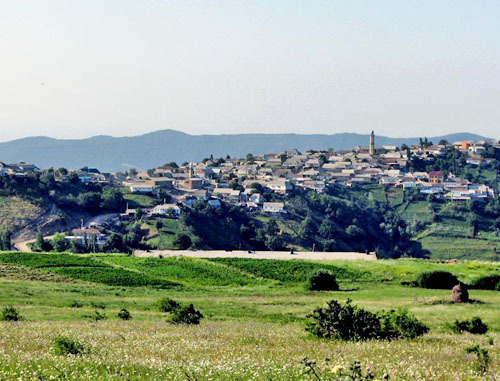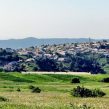
Restoration of Chechen District in Dagestan May Reverberate Across North Caucasus
Publication: Eurasia Daily Monitor Volume: 12 Issue: 48
By:

On March 11, the authoritative Dagestani newspaper Novoe Delo reported that the government of Dagestan plans to speed up the restoration of the Aukhov district in the republic, which was originally populated by ethnic Chechens. A pivotal meeting between Dagestani Deputy Prime Minister Rayudin Yusufov and activists for the district was scheduled for March 3. Even though the meeting did not take place because Yusufov was called urgently to a meeting in Moscow, it will reportedly soon be held (Novoe Delo, March 11). Dagestan’s governor, Ramazan Abdulatipov, appears to be pushing for the quickest solution to the issue of the district (Sevkavinform.ru, March 13).
The restoration of the Chechen-populated district in Dagestan would have significant repercussions for Dagestan, neighboring Chechnya and the entire North Caucasus. The move would attest to the increasing influence of the ruler of Chechnya, Ramzan Kadyrov. Ethnic groups inside Dagestan, apart from the Chechens, will likely perceive this as an unjustified concession that could lead to greater inter-ethnic competition within Dagestan and ethnic confrontation between Chechens and other ethnic groups beyond the Aukhov district. More broadly, the restoration of the Chechen-populated district in Dagestan would have an impact on similar cases in other parts of the North Caucasus, where disaffected ethnic groups could ramp up demands restoring their territorial rights.
The Aukhov district was abolished back in 1944, at the time of Joseph Stalin’s mass deportation of Chechens to Kazakhstan and other parts of Central Asia. About 15,000 Chechens were displaced from their homes and replaced with about 6,000 ethnic Laks and 800 ethnic Avars. The Aukhov district was renamed Novolak (New Lak) district and has retained that name to this day. Two villages from the district were handed over to the neighboring Kazbekovsky district and populated by ethnic Avars. After the Chechens were “pardoned” by the Soviet authorities in 1956, they started to return to their home district and have lived alongside Laks and Avars. However, Chechen demands that the district be restored accelerated with the start of perestroika in 1985. The Laks agreed to leave their homes in the district if they were given compensation, a rare example of an ethnic group voluntarily renouncing their territorial rights. Only Moscow had sufficient resources to compensate the Laks (Novoe Delo, March 11).
The decision to restore the Chechen district and move the Laks to a new location was taken back in 1991. The Laks were to be resettled in several newly founded towns near Makhachkala (Sevkavinform.ru, March 13). However, Chechnya’s quest for independence from the Russian Federation in the 1990s dampened Moscow’s support for helping the Chechens regain their losses. Chechen fortunes changed once again when Ramzan Kadyrov increasingly won greater favors from President Vladimir Putin. Now, Kadyrov appears to be so powerful that he can achieve much of what other governors in the North Caucasus regard as unthinkable.
Ethnic Chechens did not cease demanding their rights to the Aukhov district. From time to time, Chechen activists would block roads and stage public protests demanding that the government restore the district. The Dagestani authorities repeatedly promised to restore the district, but have faced several challenges. Many Dagestanis perceive the demands of Chechens in the republic as something inspired by the neighboring republic of Chechnya. In fact, some Chechen officials laid out much more expansive demands for Dagestani territory, including the city of Khasavyurt, located on the administrative border between the two republics. The restoration of the Aukhov district, therefore, was regarded by the Dagestani authorities as an eventual loss of the district to Chechnya and was associated with potential territorial claims to other areas of the republic by their expansionist neighbor (Ingnews.ru, March 9, 2013).
Currently, about half of the Aukhov district’s 31,000 people are ethnic Laks. Ethnic Chechens comprise slightly less than a third of the district’s population and ethnic Avars, along with small numbers of people from other ethnic groups, comprise the rest of the area’s population. Following the appointment of Ramazan Abdulatipov as Dagestan’s governor in 2013, the republican authorities reanimated the process of paying compensation to ethnic Laks and Avars to incentivize their relocation to other areas of the republic (Nazaccent.ru, March 6, 2013). Today, Dagestani nationalists are likely to accuse Abdulatipov of “selling out” republican interests if the governor restores the Aukhov district.
Dagestani ethnic groups have reached an agreement in principle on how to resolve the issue of Novolak/Aukhov district. Similar situations in other republics are unlikely to be resolved so easily. Ethnic Ingush are still demanding North Ossetian territory that belonged to them prior to their deportation by Stalin along with the Chechens, but the Ossetians do not seem inclined to relinquish the disputed land. Ethnic Kabardins (Circassians) and ethnic Balkars in Kabardino-Balkaria have also raised the issue of disputed land in connection to the deportation of the Balkars. Within Dagestan itself there are ongoing tensions between the traditional lowlander ethnic groups like the Kumyks and highlander ethnic groups like the Avars. The highlanders have encroached on the lowlanders’ land in past decades and changed the ethnic make-up of many districts. The restoration of the Aukhov district in Dagestan sets a dangerous precedent and would likely have repercussions in other parts of the North Caucasus, increasing the likelihood of instability and ethnic conflict.




